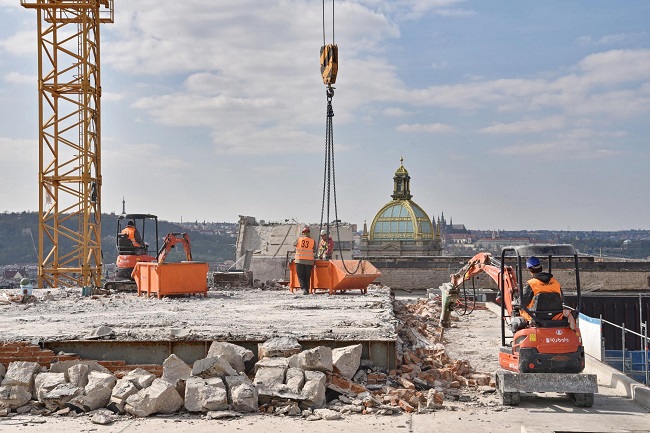
NPÚ will propose by the end of the year 95 buildings from the 60s and 70s for declaration as monuments
 |
| photo: iRozhlas.cz |
Prague – The National Heritage Institute (NPÚ) wants to present to the Ministry of Culture by the end of the year a list of 95 buildings from the 1960s and 1970s that it will propose for declaration as cultural monuments. This was stated by NPÚ director Naďa Goryczková at today's conference "Architecture of the 1960s and 1970s and Heritage Care."
According to her, the number resulted from a five-year research project focusing on buildings from this period in the Czech territory. Experts believe these buildings are still overlooked. According to Goryczková, only 0.4 percent of nearly 40,000 immovable cultural monuments in the Czech Republic enjoy heritage protection.
Goryczková stated that systematically mapping the buildings is a fundamental step towards their preservation. Just as buildings from other stylistic periods have been evaluated, it is necessary to map and evaluate those from the mentioned era, she noted. She reminded that part of the public still lacks understanding of the significance of buildings from the second half of the 20th century for the history of architecture.
There is no consensus among the professional community regarding the potential protection of these buildings, which many label as normalizing and socialist, even though some architects designed them while imprisoned by the regime of the time. Apart from the ideological aspects of opinions on them, experts believe practical guidelines for the protection of buildings need to be established. While there has been long-standing debate on how to restore stone or wood, and accepted approaches exist among experts, in the case of concrete characteristic of the buildings from the mentioned era, it is necessary to define heritage procedures for their restoration, as was noted at today's conference.
Goryczková indicated that part of the research also involved seeking a methodology for selecting representative buildings that experts believe should be proposed for potential heritage protection. As part of the project "Analysis and Presentation of the Values of Modern Architecture of the 1960s and 1970s as a Part of the National and Cultural Identity of the Czech Republic," experts conducted field surveys of 620 buildings. From this, a list of buildings that NPÚ intends to propose to the ministry by the end of the year emerged.
In the Czech Republic, there are 37,688 immovable monuments, of which those from the 20th century account for 2.99 percent with 1,162 entries on the respective list. Out of these, only 61 buildings from the 1960s and 1970s are declared as cultural monuments, which is 0.4 percent, the director noted.
From the post-war period, various shopping centers like Máj and Kotva, the former Federal Assembly, the Institute of Macromolecular Chemistry, the Expo pavilion, and the International hotel have been declared monuments. Some buildings that the state refused to declare as monuments were demolished by their owners, such as the Transgas in Prague or the Ještěd department store in Liberec. This year, the Ministry of Culture refused to declare the Prague Intercontinental hotel as a monument, which the owner is renovating, and the New Stage, which is awaiting reconstruction, is awaiting an official decision.
Goryczková mentioned in her listing of buildings addressed by the NPÚ project various sports halls and ice stadiums, theaters, cultural centers, and funeral homes. "There were numerous such buildings, many of which have high architectural quality; here the architects had complete freedom for their designs," she stated.
"The Intercontinental hotel is, in my opinion, the most significant brutalist building in the territory of former Czechoslovakia. It may happen that we erase the architecture of the second half of the 20th century; this has never happened in the history of heritage care," said architectural historian Rostislav Švácha in his contribution. He often protests against the demolition of buildings from the mentioned period and himself proposes that some of them be declared monuments.
He also mentioned that buildings from the 1960s and 1970s are being demolished in many other European countries. He recalled the demolition of the Dutch Dance Theater built in the 1980s in The Hague by the renowned architect Rem Koolhaas for Czech choreographer Jiří Kylián. The theater was demolished in 2015. In Oslo, according to Švácha, the government exploited static deficiencies in some governmental buildings following the attack by terrorist Anders Breivik. They contained decoration by Pablo Picasso; people protested against this, but part of the building was demolished, and a developer plans new constructions on the site, he noted.
The English translation is powered by AI tool. Switch to Czech to view the original text source.
0 comments
add comment







